Greeting of the Moon God by Jack Hokeah
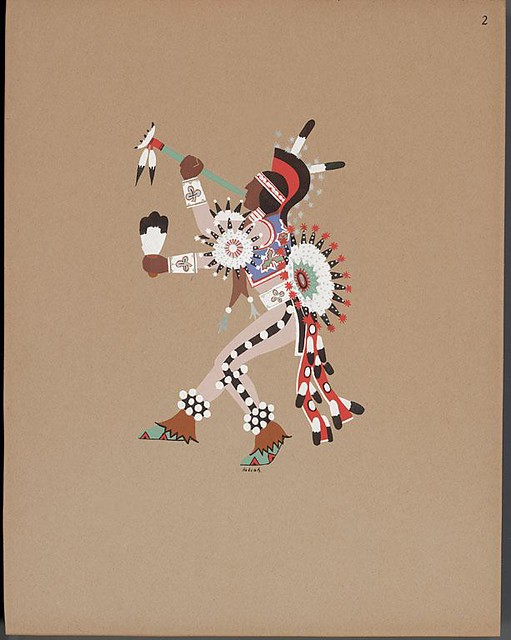
Hummingbird Dance by Jack Hokeah
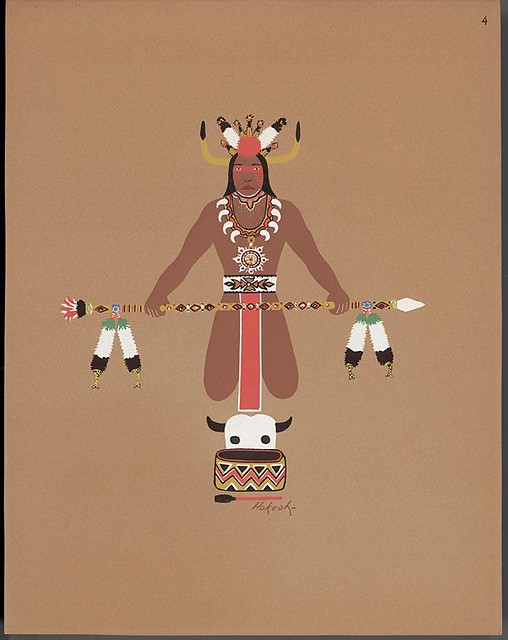
Kiowa Priest in Prayer by Jack Hokeah
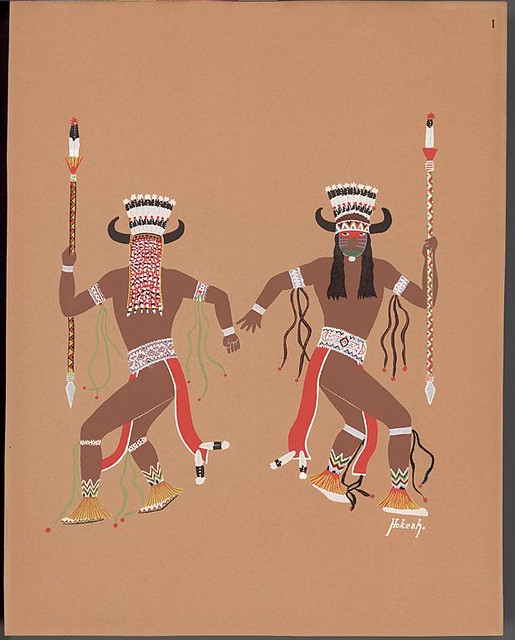
Buffalo Dance by Jack Hokeah
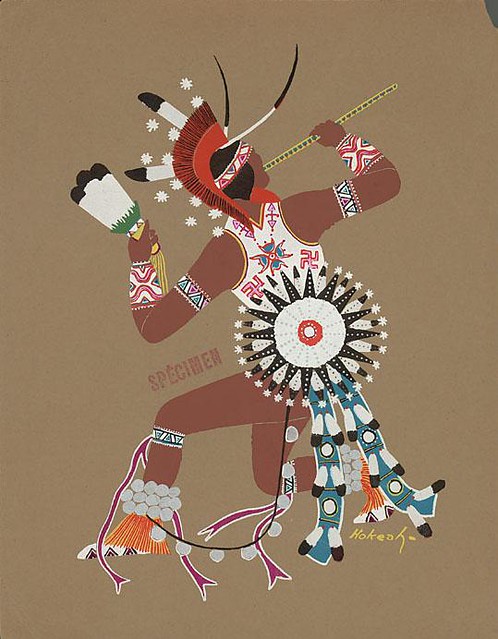
Ceremony Dance by Jack Hokeah
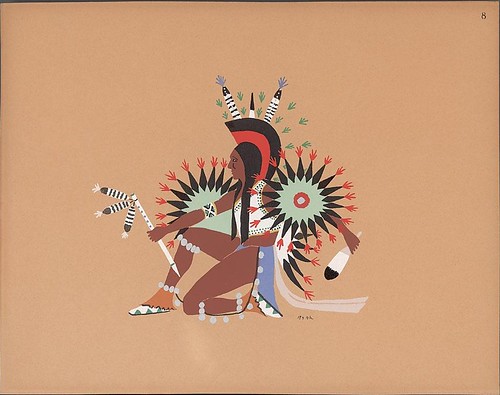
Self portrait dancing by Spencer Asah
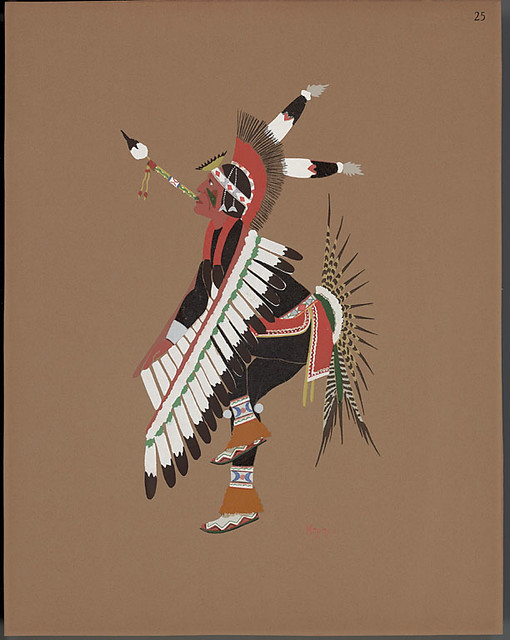
Eagle Dance by Stephen Mopope
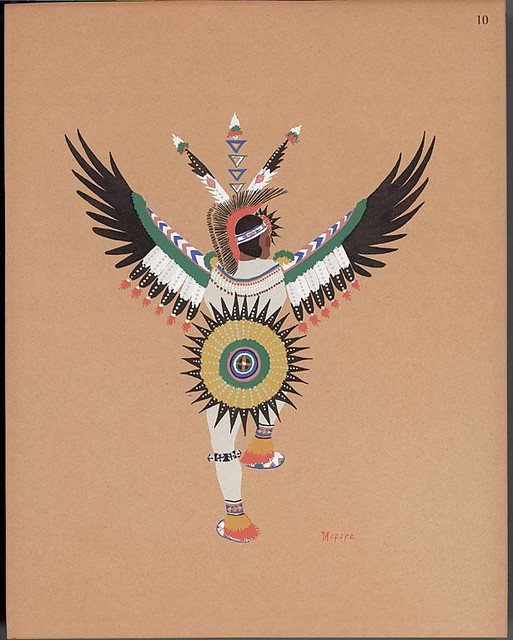
Eagle Dance by Stephen Mopope
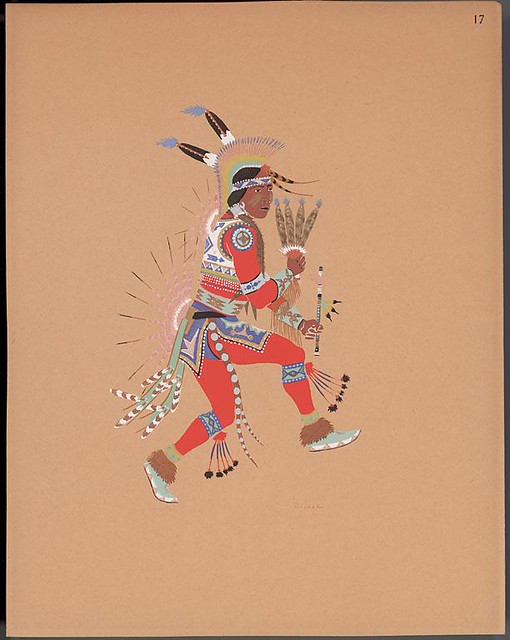
Flute Player by Stephen Mopope
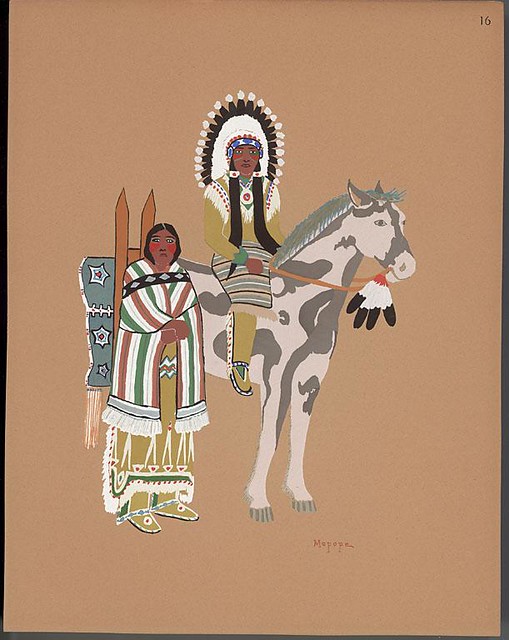
Kiowa Warrior and Wife by Stephen Mopope
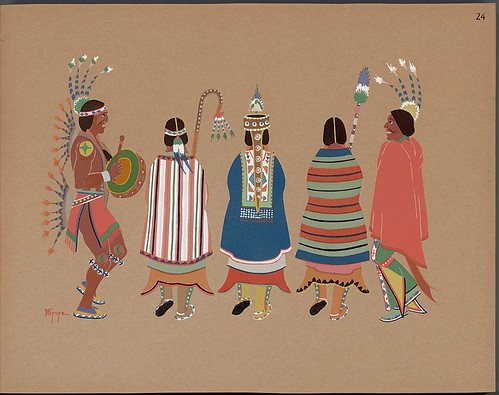
Squaw Dance by Stephen Mopope
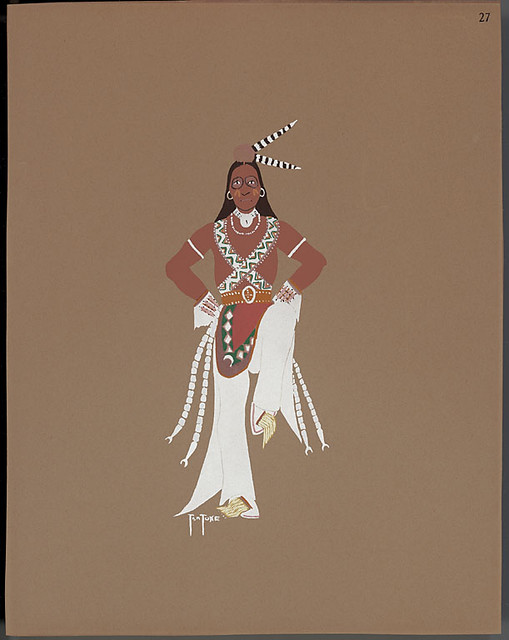
Medicine Dance by Monroe Tsatoke
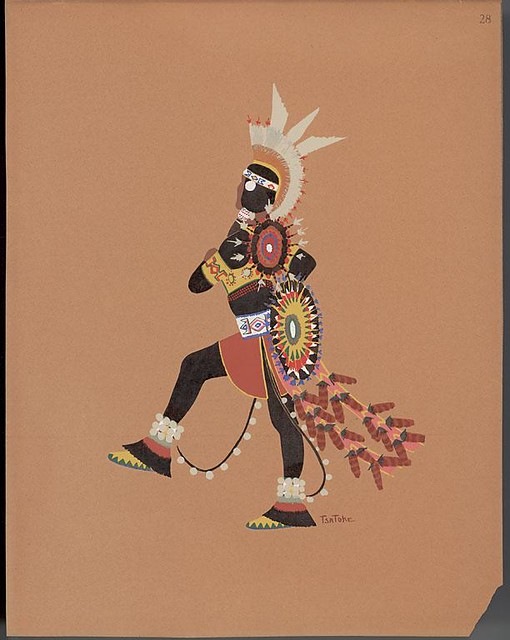
Warrior Wearing Black Clothing by Monroe Tsatoke

Warriors by Monroe Tsatoke
[All images © the Estate of the respective artist]
"The Kiowa Five were a group of painters who earned national and international acclaim during the early twentieth century. The group actually consisted of six individuals, Spencer Asah, Jack Hokeah, Stephen Mopope, Monroe Tsatoke, Lois Smoky, and James Auchiah.Jack Hokeah was born in 1902 in western Oklahoma. He attended St. Patrick's Mission School in Anadarko, Oklahoma. He died on December 14, 1969.
A number of the artists attended St. Patrick’s Mission School in Anadarko, Oklahoma, where they received art instruction from Sister Olivia Taylor. Susan Peters, a government field matron, also took an interest in the young artists' work. She arranged for an artist from Chickasha, Mrs. Willie Baze Lane, to provide art lessons. Eventually Ms. Peters persuaded Dr. Oscar Jacobson, head of the school of art at the University of Oklahoma, to provide additional training for the artists.
In 1926, Asah, Hokeah, Tsatoke, and Mopope arrived at the University. The artists were not officially enrolled, but they received special instruction from Jacobson and Dr. Edith Mahier, another professor in the school of art. In January 1927, Lois Smokey, a young Kiowa woman, arrived to study with the other artists. In spring, the artists were compelled to return home to attend to agricultral pursuits. They returned in the fall, accompanied by James Auchiah, the sixth and final student. Shortly thereafter, Lois Smokey withdrew from the program and returned home.
Dr. Oscar Jacobson arranged for the Kiowa artists’ paintings to be exhibited in 1928 at the First International Art Exposition in Prague, Czechoslovakia. In 1929, Kiowa Art, a portfolio of the artists' paintings was published in France."
Spencer Asah also known as Lallo (Little Boy) was born between 1905 and 1910 near Carnegie, Oklahoma. He attended various government Indian schools and St. Patrick's Mission School, Anadarko, Oklahoma. He died in 1954.
Stephen Mopope also known as Qued Koi (Painted Robe) was born on August 27, 1898 near Red Stone Baptist Church on the Kiowa Reservation. He attended St. Patrick's Mission School in Anadarko, Oklahoma. He died on February 3, 1974.
Monroe Tsatoke also known as Tsa To Kee (Hunting Horse) was born September 29, 1904 at Saddle Mountain, Oklahoma. He attended Rainy Mountain Indian School near Carnegie, Oklahoma and Bacone College. He died on February 3, 1937.
- Pochoir Prints of Ledger Drawings by the Kiowa Five, 1929 from the National Anthropological Archives, hosted by the Smithsonian Institution Research Information System (SIRIS). [click on 'Pochoir prints of ledger drawings by the Kiowa Five, 1929.'] The above sampling (spot cleaned) represents about half of the prints available. {Thanks Antonio!}
- The Kiowa Five by NW Hager.
- The Art of the Pochoir Book.
- UPDATE: The University of Cincinatti has a new (June 2009) exhibition site (using InSight browser) called: C. Szwedzicki: The North American Indian Works -- a collection of 364 images and 6 texts.
- UPDATE: 'Kiowa and Pueblo Art: Watercolor Paintings by Native American Artists' 2009 : "These authentic portraits of Native American life are painstakingly reproduced from hand-colored originals in two rare, costly portfolios. Created in the early 20th century by artists of the American Southwest — including the internationally renowned 'Kiowa Five' — these 81 plates offer highly collectible images of sacred and secular traditions." {Thanks MS!}
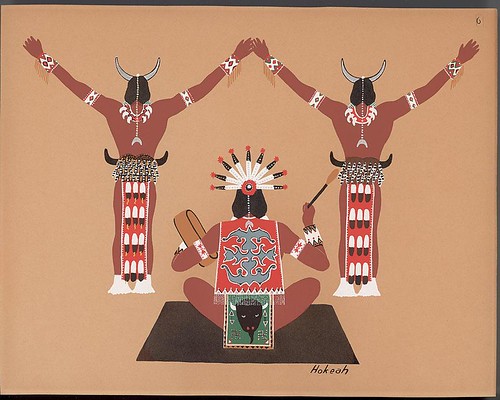



















10 comments :
Beautiful! I connected with my Native American DNA here.
Love this...I sent you to StumbleUpon so others can enjoy your prints.
Interesting stuff. I may be wrong, but it's been my impression that most 20th-century Native American artists (not contemporary people like Jaune Quick-To-See-Smith though) chose to work in styles like this with clear delineation, solid areas of color, even sometimes a look reminiscent of sand painting. A definite contrast to the looser brushstrokes that seem typical of artists who visited and did more sort of genre paintings.
I wonder if I can shoehorn any of this into the American Art class to balance out the European-American views of Native Americans that I showed last week (about 1580-1840, including of course John White)...
I love these. They look like they are gouache. Are they? I was also wondering why these artists died at such a young age. Do you have that information?
No, not gouache --- "In fact, pochoir is the French word for stenciling, a form of coloring pictures that dates to a thousand years ago in China. It was introduced to commercial publishing in France in the late 1800s, and there it had its most exquisite expression. The pochoir process would use from 20 to 250 different stencils applied to a black-and-white collotype print from a photograph. The collotypes are affixed to stencil sheets of metal or board, and the patches to be colored are cut out. Each color to be applied uses a separate pompon, or brush of coarse, shortly-cropped animal hair, to sponge or dab on the paint. Each stencil is done in turn until the image is finished, so it is essential to place the stencils exactly in position." [also]
Although my memory is fairly dim, I think there is biographical material around on the artists, if you go searching. (ie. I don't know why they died young)
these are now available in a Dover book reprint (2009)entitled "Kiowa and Pueblo Art" ISBN 978-0-486-46441-1 and some of the originals are at the University of Oklahoma, Norman OK
Thanks MS! I've added a note above.
The Getty Museum had a program called DBAE.
The 1929 portfolio you mentioned was published by Professor Jacobson in France. A run of 750 copies was made, however, the location of some of these copies is still unknown. In 1932, the collection was reprinted in France. Copies were placed in schools participating in this DBAE program from the 1932 run. Some libraries in Santa Monica received a set of the 1932 run, as did other schools in that district, from the Getty Museum.
Thanks for the info!
I have 23 of Kiowa Five Art portfolio images that I am considering selling. Any suggestions on interested parties or advertising options?
Post a Comment
Comments are all moderated so don't waste your time spamming: they will never show up.
If you include ANY links that aren't pertinent to the blog post or discussion they will be deleted and a rash will break out in your underwear.
Also: please play the ball and not the person.
Note: only a member of this blog may post a comment.